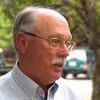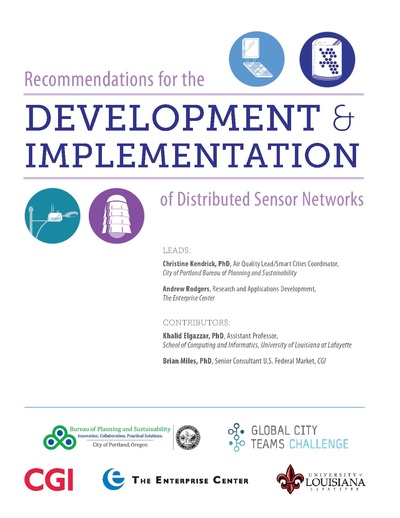| Transportation
|

|
|
|
| Sectors |
Utility
Transportation
Data
|
| Contact |
Wilfred Pinfold
|
| Topics |
|
Activities

|
|
Empowering Ruston City Services Using Wireless Sensor Networks
|
| The City of Ruston, Louisiana has a number of ongoing projects to improve the quality of life for its residents, including a Smart Grid system and a downtown fiber optic network. Louisiana Tech University plans to develop low-cost improvements to city services using the fiber-topic and small cell installations to enable smart transportation, smart weather, and smart flood risk monitoring and notification capabilities that can be viewed via a Smartphone App. We also plan to study the use of smart re-closers, wireless connectivity, and solar power potential.
|
|
|

|
|
Secure Cloud Architecture SC3-cpSriA
|
| Smart cities run largely on cloud services for efficiency and affordability reasons. Residents, government agencies, and small and medium businesses can benefit from an Architecture or Framework for privacy and rights-inclusive security practices across smart city and community cloud services. First, the City of Syracuse, New York, USA, in cooperation with Syracuse University and SC3-cpSriA Action Cluster(Smart City and Community Challenge Cloud privacy security rights inclusive Architecture) consider how the Architecture guidelines may apply. The SC3-cpSriA Action Cluster welcomes new members to broaden the debate. First, smart streetlight networks, catch basin monitoring, and water metering projects may consider if and how security, privacy, data protection and rights-inclusive cloud architecture guidelines may be followed. The ethics for facial recognition, machine learning and artificial intelligence systems and cloud services in future smart cities with privacy, security and rights-inclusive architecture will also be reviewed. Can architecture guidelines help protect citizens rights and encourage growth of smart city open data lakes, encouraging civic engagement and data privacy security and rights-inclusive innovation, entrepreneurship and economic development?
|
|
|
Press
|
- Authors












We define a smart city as one that has purpose (sustainability, equity, traffic safety) to its planning and measures results of its actions towards
achieving that purpose. For this reason we consider three elements fundamental to a smart city: (1) A planning process based on a deep understanding
of the needs of the community, (2) A set of metrics to measure progress, and (3) A data platform to enable data collection and measurement against
metrics. A smart city is therefore a dynamic city that makes living in a dense urban environment more civil and more rewarding. A smart city is not
only attractive to people who live there, but to people who visit and companies doing business there. As already explained, we consider a data platform
to enable data collection and measurement against planning metrics to be fundamental to a smart city. The goal is to make decisions based on data.
Such a platform would enable a real time response to demand, events and emergencies. It would allow planners to make sure the city’s budget is used
as effectively and efficiently as possible to meet the city's goals. This represents one way that cities can break down silos and use data intelligently
so that government operates as a true enterprise, rather than as a series of loosely linked departments and agencies.
Through greater data availability citizens can be better engaged, and system managers can see further and more holistically.

















